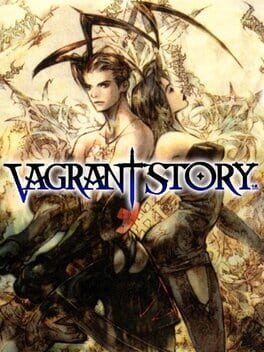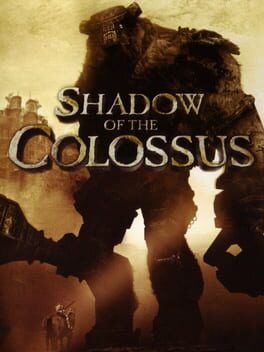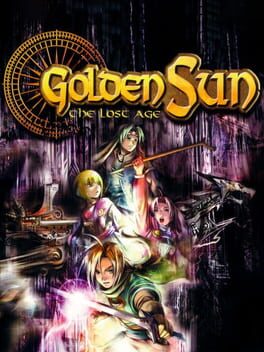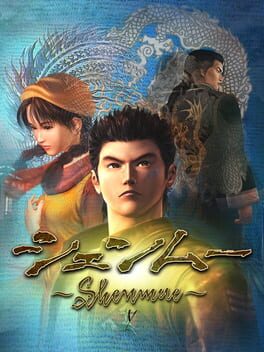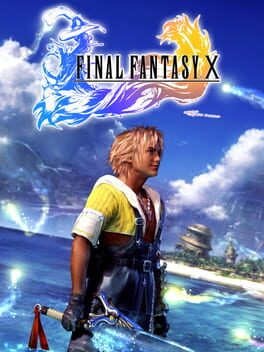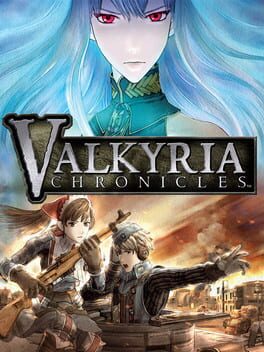Hirothero
Bio
Fantasy stories and happy vibes.
I'm an English student, so please pardon me if I make any mistakes in my writing!
Fantasy stories and happy vibes.
I'm an English student, so please pardon me if I make any mistakes in my writing!
Badges

Noticed
Gained 3+ followers

1 Years of Service
Being part of the Backloggd community for 1 year

On Schedule
Journaled games once a day for a week straight
Favorite Games
023
Total Games Played
004
Played in 2024
000
Games Backloggd
Recently Played See More
Recently Reviewed See More
Whenever we talk about the best JRPGs of the PS360/Wii generation, one common name comes to mind: Xenoblade Chronicles. However, this top spot can be explained in the context of the time, as during those years the Japanese industry was going through a deep crisis on a creative and competitive level against Western AAA titles. Square's fall from grace, the numerous problems in the development of video games that persisted over time or were cancelled, and the shift of many productions to portable systems, as in the case of Dragon Quest IX: Sentinels of the Starry Sky or the disappointing Golden Sun: Dark Dawn, are just a few examples of how other great stories stood out from the rest. Not just because of how good they could be, but because they were limited. Personally, apart from Xenoblade Chronicles, I can only save Lost Odyssey and the game I'm reviewing: Valkyria Chronicles. As for these two games, I can't say that I played them at the time because I didn't have an Xbox 360 to play Lost Odyssey or a PlayStation 3 to play Valkyria Chronicles.
Valkyria Chronicles was a game that broke through with the same commercial success as the rest of the Japanese games outside the country, that is, it barely made a dent. It wasn't until late 2014, with its release on Steam, that the game's positive reception from the press and word-of-mouth from players allowed sales and player numbers to soar to the top of the charts in its first few weeks. On top of that, the game was occasionally discounted to just under 8€/$, making it a bargain to pick up one of the best JRPGs of its generation at such a tempting price. Something I couldn't resist.
I knew nothing more about Valkyria Chronicles than that it was a tactical JRPG and that it had been well received. The first thing you see on the screen is an opening with a precious watercolour art style, contrasting with a musical theme and images that evoke feelings of both sadness and grandeur. This is not surprising, as the composer is none other than Mr Hitoshi Sakimoto, and the staff is made up of members of the Sakura Wars team. The story takes us to a fictional Europe where a nation, the Principality of Gallia (geographically located in Switzerland), is threatened by the invasion of the Empire, a combination reminiscent of Nazi Germany and the Soviet Union. The reason for this military conflict is to occupy a strategic position and to exploit a combustible mineral called 'ragnite', whose energy can be used to light the streets or to develop technological armament. The invasion should have been a mere formality for the imperial troops, since the real confrontation on a grand scale was the war between the Empire and the Atlantic Federation. But as soon as they reach the capital, they encounter the unwavering faith and resistance of the Gallian people. We, as Welkin Gunther, will lead the 7th Squadron of the Militia through various missions and skirmishes until the imperial troops are driven out and Gallia is liberated.
The plot is pure cliché from start to finish. A war between two nations leads one of them to invade another's territory in search of a mineral that can make all the difference in the end. And these poor, innocent people are subjected to the oppression and destruction of their country and home. Later, the existence of an extinct tribe called the 'Valkyrur', which gives the game its title, is discovered. However, the story leading up to the final battle doesn't add anything new. In terms of gameplay, the management of units and weapons is very simple. What is Valkyria Chronicles good at? It avoids falling into the stereotypes that characterise this type of story and creates a tactical JRPG that is more dynamic and closer to XCOM than the chess-like strategic gameplay of its counterparts.
First and foremost, the game opts for anime-style designs that fit perfectly with the saga's unique artistic style. The characters are genuinely charismatic, avoiding the need to push archetypes to the limit and cheap fanservice, which in later entries becomes more disgusting, especially considering how this first instalment struggles to give coherence to all these elements. The general tone of the fable revolves around peace and the legacy we leave to future generations, making a clear anti-war statement. At times, however, this message comes across as too soft. Nevertheless, the story remains entertaining, and the ending is very satisfying. It is impossible not to wish the Welkin/Alice couple happiness forever.
Secondly, the 'BLiTZ' system is about bringing tactical role-playing into real time. We control a certain number of units that are free to move around the map. Once we select a unit, we are exposed to enemy counterattacks until we decide to launch an attack or take cover behind a pile of sandbags. Each unit belongs to a specific class and, in addition to carrying different weapons, has a specific purpose: scouts are highly mobile units, but very weak against artillery; shock troopers have limited mobility, but are very tough units; lancers are key units for destroying tanks, and snipers take out enemies from a distance. Welkin, aboard the Edelweiss tank, has the power to issue orders that increase the stats of our units. It feels great to move around the map. It's a shame that if you're clever or on your second run, you can take Alicia, give her some orders, take advantage of her invincibility, capture the enemy base, and get an S-rank on the third turn. Also, some maps are too unfair, with constant ambushes in situations where you are completely exposed. Worst of all is the way the game rewards you based on the number of turns it takes to complete the mission you are given. It's not important to defeat all the enemy units or avoid losing allies. The important thing is to get there quickly and straight.
Although the issues described are minor and do not significantly detract from the overall experience, they are the nuances that separate a good game from an excellent one. Valkyria Chronicles deserves recognition as one of the best JRPGs of its time. The saga has four parts. The sequels have been spread across portable and home systems. It is never too late to remember this heartwarming tale. A story carefully crafted during a turbulent time for Japanese video games.
Valkyria Chronicles was a game that broke through with the same commercial success as the rest of the Japanese games outside the country, that is, it barely made a dent. It wasn't until late 2014, with its release on Steam, that the game's positive reception from the press and word-of-mouth from players allowed sales and player numbers to soar to the top of the charts in its first few weeks. On top of that, the game was occasionally discounted to just under 8€/$, making it a bargain to pick up one of the best JRPGs of its generation at such a tempting price. Something I couldn't resist.
I knew nothing more about Valkyria Chronicles than that it was a tactical JRPG and that it had been well received. The first thing you see on the screen is an opening with a precious watercolour art style, contrasting with a musical theme and images that evoke feelings of both sadness and grandeur. This is not surprising, as the composer is none other than Mr Hitoshi Sakimoto, and the staff is made up of members of the Sakura Wars team. The story takes us to a fictional Europe where a nation, the Principality of Gallia (geographically located in Switzerland), is threatened by the invasion of the Empire, a combination reminiscent of Nazi Germany and the Soviet Union. The reason for this military conflict is to occupy a strategic position and to exploit a combustible mineral called 'ragnite', whose energy can be used to light the streets or to develop technological armament. The invasion should have been a mere formality for the imperial troops, since the real confrontation on a grand scale was the war between the Empire and the Atlantic Federation. But as soon as they reach the capital, they encounter the unwavering faith and resistance of the Gallian people. We, as Welkin Gunther, will lead the 7th Squadron of the Militia through various missions and skirmishes until the imperial troops are driven out and Gallia is liberated.
The plot is pure cliché from start to finish. A war between two nations leads one of them to invade another's territory in search of a mineral that can make all the difference in the end. And these poor, innocent people are subjected to the oppression and destruction of their country and home. Later, the existence of an extinct tribe called the 'Valkyrur', which gives the game its title, is discovered. However, the story leading up to the final battle doesn't add anything new. In terms of gameplay, the management of units and weapons is very simple. What is Valkyria Chronicles good at? It avoids falling into the stereotypes that characterise this type of story and creates a tactical JRPG that is more dynamic and closer to XCOM than the chess-like strategic gameplay of its counterparts.
First and foremost, the game opts for anime-style designs that fit perfectly with the saga's unique artistic style. The characters are genuinely charismatic, avoiding the need to push archetypes to the limit and cheap fanservice, which in later entries becomes more disgusting, especially considering how this first instalment struggles to give coherence to all these elements. The general tone of the fable revolves around peace and the legacy we leave to future generations, making a clear anti-war statement. At times, however, this message comes across as too soft. Nevertheless, the story remains entertaining, and the ending is very satisfying. It is impossible not to wish the Welkin/Alice couple happiness forever.
Secondly, the 'BLiTZ' system is about bringing tactical role-playing into real time. We control a certain number of units that are free to move around the map. Once we select a unit, we are exposed to enemy counterattacks until we decide to launch an attack or take cover behind a pile of sandbags. Each unit belongs to a specific class and, in addition to carrying different weapons, has a specific purpose: scouts are highly mobile units, but very weak against artillery; shock troopers have limited mobility, but are very tough units; lancers are key units for destroying tanks, and snipers take out enemies from a distance. Welkin, aboard the Edelweiss tank, has the power to issue orders that increase the stats of our units. It feels great to move around the map. It's a shame that if you're clever or on your second run, you can take Alicia, give her some orders, take advantage of her invincibility, capture the enemy base, and get an S-rank on the third turn. Also, some maps are too unfair, with constant ambushes in situations where you are completely exposed. Worst of all is the way the game rewards you based on the number of turns it takes to complete the mission you are given. It's not important to defeat all the enemy units or avoid losing allies. The important thing is to get there quickly and straight.
Although the issues described are minor and do not significantly detract from the overall experience, they are the nuances that separate a good game from an excellent one. Valkyria Chronicles deserves recognition as one of the best JRPGs of its time. The saga has four parts. The sequels have been spread across portable and home systems. It is never too late to remember this heartwarming tale. A story carefully crafted during a turbulent time for Japanese video games.
I love to "run into" a video game, but why do I put run into between marks? Because many of us have lost the capacity to leap into the void, to buy a video game without knowing anything about it. This is due to the amount of information that is available to us before a game's release, such as gameplay footage, trailers, and numerous reviews from both the press and various websites. It's not a critique; you can always disregard preceding input and suggestions from others. However, I need to recount my experience to provide context, as I bought the game without knowing what I was getting into.
And I was expecting a game reminiscent of Shenmue with a mafia theme. Yet, in merely two hours, I had already gone from beating the shit out of Kuze to running a hostess club in Osaka. I didn't understand much, but it was enjoyable. The video game studio had been creating the same thing for a decade, and the story had already had five numbered parts. It's unfortunate that some of you may only know this saga through word-of-mouth or memes. However, it's a joy that we're already on the eighth instalment of this niche saga. I may never feel like those who played NieR without knowing what to expect, but their support allowed me to play the remastered version on my PS4. Yakuza 0 was my own finding.
What does "Dame dame" mean? I don't know, the friends we make along the way. Play it and find out.
And I was expecting a game reminiscent of Shenmue with a mafia theme. Yet, in merely two hours, I had already gone from beating the shit out of Kuze to running a hostess club in Osaka. I didn't understand much, but it was enjoyable. The video game studio had been creating the same thing for a decade, and the story had already had five numbered parts. It's unfortunate that some of you may only know this saga through word-of-mouth or memes. However, it's a joy that we're already on the eighth instalment of this niche saga. I may never feel like those who played NieR without knowing what to expect, but their support allowed me to play the remastered version on my PS4. Yakuza 0 was my own finding.
What does "Dame dame" mean? I don't know, the friends we make along the way. Play it and find out.
This review contains spoilers
Nostalgia can evoke mixed emotions when it comes to video games or any other subject. I miss the old times, as many others, reminiscing about the days spent playing titles like Time Crisis or Street Fighter in the seaside bar, trading Pokémon with friends, or watching our siblings playing "mature games" like Metal Gear Solid. Such feelings are not unique to us, millennials. Life is a full circle that everyone has experienced before. Now, in our thirties, we long for those days, those video games, and those stories, but... Fear stops us from revisiting them. I'm not the same person; it's not the same time, and perhaps I no longer like this or that game. With the passage of time, I've changed my mind and returned to my childhood, rediscovering Final Fantasy X, despite not having arrived at the same destination.
Just to be clear, I hardly remembered anything. Yes, I knew about Yuna's pilgrimage and the story so far, and the suffering of playing on a 50Hz PlayStation 2 PAL system, but it was from a childish point of view. No deep understanding of the characters or the proper context of the story. But this time, Final Fantasy X has been a completely different experience for me.
The first major impression of this game comes, first and foremost, from its visuals, namely, the setting, and for two reasons:
· It was the first entry of Final Fantasy game on PlayStation 2. A year before that, Squaresoft released Final Fantasy IX, bidding farewell to a system that heralded a new era for JRPGs outside Japan.
· The contemporary context: the setting and atmosphere of Final Fantasy X were deeply rooted in its time, the early 2000s when the slogan was "the future is now". Everything seemed extravagant, like a glimpse of a distant future that we wished was already there due to the introduction of new technologies such as the Internet or science fiction movies like The Matrix. However, unlike today, it wasn't tangible because those years were still ahead. This gave birth to those adventures, those stories set in fantastical worlds that blended the past and the future, creating something truly extraordinary and creative.
I will show you this with the start. The game opens with a cutscene. There is a group of characters gathered around a fire at an improvised camp, and they appear to be sorrowful, as if they have gone through something painful. In the background, there is a city in ruins, and a boy resembles a "young Asian Leonardo DiCaprio" invites us to discover his story™. The menu screen, accompanied by "The Summoning" with water flowing above, is really my comfort zone. But we select new game before the opening starts again, and then... We find ourselves in the same city, Zanarkand, but it isn't in ruins; it's a futuristic place. The same boy, Tidus (although his name is never pronounced), is a Blitzball star. Blitzball is a sports game that combines the spectacle of the NBA with football rules, all within a gigantic water sphere. As we head to the stadium for a match, all seems normal. A beautiful song is played and an announcer introduces us to a legendary player, Jecht, who is missing. Suddenly, a heavy metal song starts playing to the rhythm of a mysterious man's steps, and in the city, an immense monster emerges. Sin wreaks havoc, destroying all in its path. Lastly, the mysterious man, Auron, helps Tidus, but Zanarkand falls apart, and Sin swallows them both. Tidus awakens alone in a whole new world. This world, Spira, doesn't look like the Zanarkand that Tidus knows. It's as if he has traveled, dunno, 1000 years into the past. The fusion of past and future elements, merging Western and Eastern aspects in the environments, attire, technology, religion, and music, enriches the worldbuilding and the plot.
In Besaid, the first settlement, the townspeople play Blitzball, although the island resembles a small fishing village in Southeast Asia. Yuna, the town's summoner, wears a dress inspired by Japanese tradition, with an obi cinched tightly around her waist. Very demure and elegant. However, one of her guardians, Lulu, has a completely gothic look, wearing a dress adorned with dozens of belts. Seeking answers, Tidus accompanies Yuna and her guardians on their quest: a pilgrimage to the borders of Spira, beyond Zanarkand, to defeat the calamity that has been devastating the world until the arrival of new calm; Sin. The world is vast, but the quest narrows the path to a straight line. I've always considered it a necessary sacrifice to endow authenticity to the story and enhance it.
A story that, strangely enough, when I was a child, I considered childish. Now that I'm an adult, I find it deep. I've always had in mind a scene that seemed ridiculous to me: Tidus dreaming with his father mocking him while Yuna and Rikku stood by his sides. At the time, I laughed a lot watching this scene and the voice actor's performance of Jecht. Now, having completed the game, this moment reflects the trauma of a child abandoned by his parents. Tidus is the best character and the most well-written one; his evolution throughout the story is notable. From being a future broken toy in the dreaming Zanarkand, he arrives in Spira questioning everything and helps the people around him to open their eyes. Why must they steadfastly follow Yevon's dogma? Why must they condemn Yuna to a fatal fate? Is there no way to save her and finally put an end to this cycle of destruction? Yuna is another equally well-constructed character, following in her father's footsteps, selflessly facing the world with a smile on her face, but inside she hides the grief and fear of losing her life that no smile can cover. And Wakka's not stupid, please, just hold on to religion by mourning his brother's death.
Final Fantasy X's speech is based on life and death from a perspective close to Buddhism, Confucianism and Shinto, and it uses a primary element of life, water, to represent and emphasize certain moments in the story. In Zanarkand, Tidus is swallowed by a giant monster; in Besaid, Tidus arrives floating on water; in Kilika, the water is bright crimson, metaphorically representing the death of its inhabitants; in the waters of Macarena, Tidus flows with Yuna; and finally, Tidus emerges from the waters of Besaid in the post-credits.
"How many died today? People die, and Yuna dances. When will she stop dancing? When will it stop?" - Tidus after Sin attacks in Mushroom Rock Road.
"Goodbye, Chappu. You always said I looked grumpy, but those were the happiest days of my life." - Lulu in the Farplane.
Are you listening to it while reading, true? Each and every one of the melodies that accompany this journey. The fusion of elements forms a whole, including the music. For one last time at Squaresoft, Nobuo Uematsu used the PlayStation 2 to its full potential, mixing classical instruments with synthesizers or violins with electric guitars. A year ago, I went to the Distant Worlds concert in Barcelona and was delighted to hear musical themes including "To Zanarkand" and "Suteki da ne" performed by RIKKI. My favorite soundtrack of all time. The sublime locations and backgrounds, beautifully scaled in the remastered version, elevate the eccentric from the concepts previously explained and that I was truly fortunate to study in depth in the third volume of the "Final Fantasy Ultimania Archive" compendium.
Gameplay-wise, the game remains fun, with the Sphere Grid allowing us to configure our characters' attributes and abilities to such an extent that this method of customization and progression has been widely praised. Personally, I'm grateful for the way the game encourages the player to take advantage of weaknesses and altered states. Have you ever suffered from petrify or zombie states like in this game? The fight against Yunalesca is one of the most, if not the most, satisfying in the video game. I would like to write a review about Blitzball, but Backloggd should open a special entry for that. What a vein they missed at Square by not making a standalone spin-off of this mini-game. The only not-so-positive point of this review is the post-game, due to its long duration for something that doesn't deserve a 200-hour investment and for obtaining many objects that require a guide. Guides that cost 20€/$ at the time.
Final Fantasy X is a rediscovery, and I appreciate the work more than the day I saw my old friend Jesus play it the first time in 2001. That's my story, which's yours?
Just to be clear, I hardly remembered anything. Yes, I knew about Yuna's pilgrimage and the story so far, and the suffering of playing on a 50Hz PlayStation 2 PAL system, but it was from a childish point of view. No deep understanding of the characters or the proper context of the story. But this time, Final Fantasy X has been a completely different experience for me.
The first major impression of this game comes, first and foremost, from its visuals, namely, the setting, and for two reasons:
· It was the first entry of Final Fantasy game on PlayStation 2. A year before that, Squaresoft released Final Fantasy IX, bidding farewell to a system that heralded a new era for JRPGs outside Japan.
· The contemporary context: the setting and atmosphere of Final Fantasy X were deeply rooted in its time, the early 2000s when the slogan was "the future is now". Everything seemed extravagant, like a glimpse of a distant future that we wished was already there due to the introduction of new technologies such as the Internet or science fiction movies like The Matrix. However, unlike today, it wasn't tangible because those years were still ahead. This gave birth to those adventures, those stories set in fantastical worlds that blended the past and the future, creating something truly extraordinary and creative.
I will show you this with the start. The game opens with a cutscene. There is a group of characters gathered around a fire at an improvised camp, and they appear to be sorrowful, as if they have gone through something painful. In the background, there is a city in ruins, and a boy resembles a "young Asian Leonardo DiCaprio" invites us to discover his story™. The menu screen, accompanied by "The Summoning" with water flowing above, is really my comfort zone. But we select new game before the opening starts again, and then... We find ourselves in the same city, Zanarkand, but it isn't in ruins; it's a futuristic place. The same boy, Tidus (although his name is never pronounced), is a Blitzball star. Blitzball is a sports game that combines the spectacle of the NBA with football rules, all within a gigantic water sphere. As we head to the stadium for a match, all seems normal. A beautiful song is played and an announcer introduces us to a legendary player, Jecht, who is missing. Suddenly, a heavy metal song starts playing to the rhythm of a mysterious man's steps, and in the city, an immense monster emerges. Sin wreaks havoc, destroying all in its path. Lastly, the mysterious man, Auron, helps Tidus, but Zanarkand falls apart, and Sin swallows them both. Tidus awakens alone in a whole new world. This world, Spira, doesn't look like the Zanarkand that Tidus knows. It's as if he has traveled, dunno, 1000 years into the past. The fusion of past and future elements, merging Western and Eastern aspects in the environments, attire, technology, religion, and music, enriches the worldbuilding and the plot.
In Besaid, the first settlement, the townspeople play Blitzball, although the island resembles a small fishing village in Southeast Asia. Yuna, the town's summoner, wears a dress inspired by Japanese tradition, with an obi cinched tightly around her waist. Very demure and elegant. However, one of her guardians, Lulu, has a completely gothic look, wearing a dress adorned with dozens of belts. Seeking answers, Tidus accompanies Yuna and her guardians on their quest: a pilgrimage to the borders of Spira, beyond Zanarkand, to defeat the calamity that has been devastating the world until the arrival of new calm; Sin. The world is vast, but the quest narrows the path to a straight line. I've always considered it a necessary sacrifice to endow authenticity to the story and enhance it.
A story that, strangely enough, when I was a child, I considered childish. Now that I'm an adult, I find it deep. I've always had in mind a scene that seemed ridiculous to me: Tidus dreaming with his father mocking him while Yuna and Rikku stood by his sides. At the time, I laughed a lot watching this scene and the voice actor's performance of Jecht. Now, having completed the game, this moment reflects the trauma of a child abandoned by his parents. Tidus is the best character and the most well-written one; his evolution throughout the story is notable. From being a future broken toy in the dreaming Zanarkand, he arrives in Spira questioning everything and helps the people around him to open their eyes. Why must they steadfastly follow Yevon's dogma? Why must they condemn Yuna to a fatal fate? Is there no way to save her and finally put an end to this cycle of destruction? Yuna is another equally well-constructed character, following in her father's footsteps, selflessly facing the world with a smile on her face, but inside she hides the grief and fear of losing her life that no smile can cover. And Wakka's not stupid, please, just hold on to religion by mourning his brother's death.
Final Fantasy X's speech is based on life and death from a perspective close to Buddhism, Confucianism and Shinto, and it uses a primary element of life, water, to represent and emphasize certain moments in the story. In Zanarkand, Tidus is swallowed by a giant monster; in Besaid, Tidus arrives floating on water; in Kilika, the water is bright crimson, metaphorically representing the death of its inhabitants; in the waters of Macarena, Tidus flows with Yuna; and finally, Tidus emerges from the waters of Besaid in the post-credits.
"How many died today? People die, and Yuna dances. When will she stop dancing? When will it stop?" - Tidus after Sin attacks in Mushroom Rock Road.
"Goodbye, Chappu. You always said I looked grumpy, but those were the happiest days of my life." - Lulu in the Farplane.
Are you listening to it while reading, true? Each and every one of the melodies that accompany this journey. The fusion of elements forms a whole, including the music. For one last time at Squaresoft, Nobuo Uematsu used the PlayStation 2 to its full potential, mixing classical instruments with synthesizers or violins with electric guitars. A year ago, I went to the Distant Worlds concert in Barcelona and was delighted to hear musical themes including "To Zanarkand" and "Suteki da ne" performed by RIKKI. My favorite soundtrack of all time. The sublime locations and backgrounds, beautifully scaled in the remastered version, elevate the eccentric from the concepts previously explained and that I was truly fortunate to study in depth in the third volume of the "Final Fantasy Ultimania Archive" compendium.
Gameplay-wise, the game remains fun, with the Sphere Grid allowing us to configure our characters' attributes and abilities to such an extent that this method of customization and progression has been widely praised. Personally, I'm grateful for the way the game encourages the player to take advantage of weaknesses and altered states. Have you ever suffered from petrify or zombie states like in this game? The fight against Yunalesca is one of the most, if not the most, satisfying in the video game. I would like to write a review about Blitzball, but Backloggd should open a special entry for that. What a vein they missed at Square by not making a standalone spin-off of this mini-game. The only not-so-positive point of this review is the post-game, due to its long duration for something that doesn't deserve a 200-hour investment and for obtaining many objects that require a guide. Guides that cost 20€/$ at the time.
Final Fantasy X is a rediscovery, and I appreciate the work more than the day I saw my old friend Jesus play it the first time in 2001. That's my story, which's yours?
